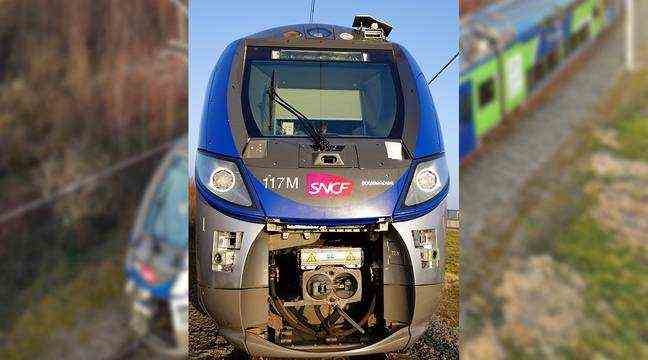The prototype of autonomous TER tested in Nord and Pas-de-Calais. – Photo: Samuel Dhote ©
- With a consortium of partners, SNCF is developing a prototype of an autonomous train.
- The first tests have already been carried out in Nord and Pas-de-Calais.
- SNCF hopes to see the first autonomous trains arrive by 2023.
Is there a pilot on the train? Since last March, with a few months late due to the coronavirus epidemic, SNCF has been testing a prototype of
Autonomous TER on a line between Nord and Pas-de-Calais. The ultimate goal is to run driverless trains on conventional commercial lines. However, if the technology is developed, it will not be everywhere, nor for now.
The autonomous train project, born in 2016, was only really launched two and a half years ago, with the formation of a consortium bringing together SNCF, Alstom, Spirops, Thales and Railenium. The specifications were “simple”, to develop a system that could be grafted onto a train in order to allow it to operate without a driver. Thanks to a substantial research and development budget of 57 million euros and a TER train set loaned by the Hauts-de-France region, the Bombarbier plant in Crespin was able to release its prototype at the start of 2021.
“Testing the system in an open environment”
At first glance, nothing differentiates this train from another, it also circulates normally on the network when not being used for testing. Everything happens in front, in the cabin and on the front of the train. The train was fitted with different kinds of sensors, such as cameras and laser radars. The computer servers are installed just behind the cabin at the cost of two seats. The tests were carried out on a section of the line between Busigny and Calais, without passengers, and at the Valenciennes rail test center. “The aim is to test the system in an open environment, with level crossings, animals, obstacles, no longer in a closed environment like the Lille metro,” explains Philippe Molitor from Alstom.
And it works, even if there is still a need to refine and “educate” the artificial intelligence of the machine. And when everything is fine-tuned, the consortium promises incredible efficiency: “Automated, acceleration and braking maneuvers will be more efficient, making it possible, for example, to reduce fuel consumption or increase frequencies. In difficult conditions, at night or in fog, the autonomous train will also perform better where the human eye will be in difficulty ”, continues the spokesperson for Alstom.
However, the profession of railway worker is not obsolete. “Before full autonomy, the intermediate levels are interesting since it allows to provide driving aids as in cars for example”, assures Philippe Molitor. There is also no question, at least for the moment, of transposing this system into a TGV. There is also the question of the regulation and certification of the system. And this will not be the simplest test if we observe the one concerning drones or the international regulations very restrictive, adopted by France, for autonomous cars. The SNCF is however confident since it announces its “autonomous trains by 2023”.

